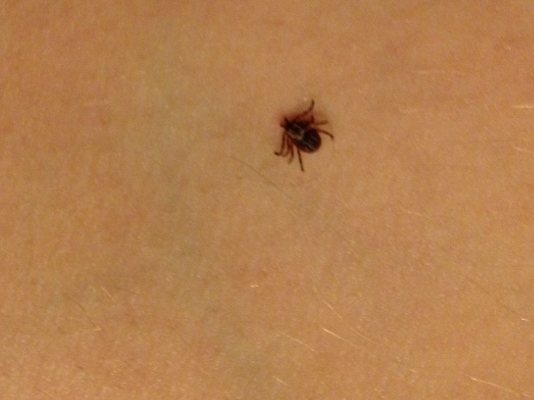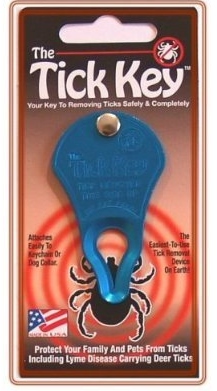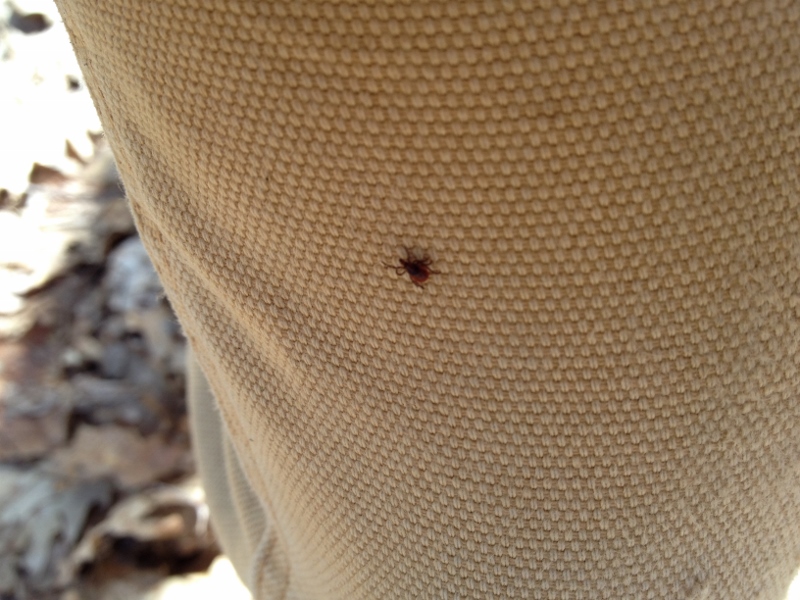by Bart Beck.
It seems like something straight out of a horror film or nightmare: creatures that lurk in hiding, waiting to spread diseases or feed off your blood. Unfortunately, these creatures are part of everyday reality for many of us who leave the comforts of home. As you might have guessed by now, I’m talking about ticks and mosquitoes.
 These two creatures spread various diseases, most notably Lyme, West Nile, and Malaria (the CDC has comprehensive descriptions and symptom lists for these illnesses). Obviously these diseases can be pretty serious with short and long term consequences.
These two creatures spread various diseases, most notably Lyme, West Nile, and Malaria (the CDC has comprehensive descriptions and symptom lists for these illnesses). Obviously these diseases can be pretty serious with short and long term consequences.
Fortunately, there have been huge advancements in minimizing the spread of these diseases, and it starts with the prevention of bites. These prevention methods can be placed into two categories: physical and chemical. Physical methods can be considered decisions that you make right from the get go, including what you wear and where you go. Chemical methods of prevention are basically any sprays you adhere to your skin to deter bugs from even landing on you.
Physical Methods of Preventing Bug Bites
Stay on designated trails:
-Stay on well marked trails and out of brushy areas that harbor more ticks to reduce possible exposure.
Clothing:
-Wear long pants, long sleeve shirts, and gators.
-Tuck clothes in to make it harder for the bugs to get to your skin.
-Wear light colored clothes to make it easier to see ticks and other bugs, so they can be removed before finding their way to your skin.
-Wear hats to make it more difficult for bugs to get to your scalp.
Screens:
-Think about adding headnets to your wardrobe. Headnets are screen nets that can be used in conjunction with hats to keep insects from your head. Many companies such as Coghlans and Outdoor Research make versions of this product.
-Sleep in tents that are completely closed or have screen netting to keep bugs from getting to you while you sleep.
-Use a bug screen shelter or bivy sack if you aren’t sleeping in a tent. Sea to Summit, as well as many other companies, make multiple variations of these products to suit your needs.
Chemical Methods of Preventing Bug Bites
Bug sprays:
-DEET is a chemical which is extremely effective as a bug spray. This product can have side effects, so it’s important to read and follow all guidelines associated with the product.
-Natural spays are made by many companies and use ingredients such as Eucalyptus and Lemon. Repel’s Lemon Eucalyptus Insect Repellent is a good example of this type of product. These products vary greatly in strength, effectiveness, and what they protect against, but for many of us, the peace-of-mind of using natural products is just as important as avoiding bug bites.
-Permethrin is another very effective chemical. This product often comes in two ways: sprays and pretreated garments.
-Sprays can be applied to clothes and can last approximately two weeks depending on brand.
-Many companies have lines of clothes and gear that are pretreated with permethrin and last through several washes. Columbia Sportswear Insect Blocker Apparel and Ex Officio BugsAway Shirts and Pants are two examples.
What If You Get Bit?
If you spend a lot of time outdoors, eventually you will get bit by a mosquito or tick; I’m sorry to break it to you, but that’s just the way the outdoors works. Getting bitten by a mosquito is more of a nuisance than anything, but it’s important to be aware of any flu-like symptoms after the bite since these could be signs of a mosquito-spread virus.
On the other hand, tick bites require removal as soon as possible, so it’s important to scan the body daily for any ticks. The quicker a tick is removed, the less likely you are to contract a disease.
Many products such as the Tick Key are made to remove ticks, but a simple pair of tweezers can also get the job done. The trick is to grasp the tick around the head, close to the skin, and pull away from the skin with steady, even pressure. Avoid jerking or twisting to help ensure that parts of the tick aren’t left in the body. Once removed, clean the area. Afterwards, be cautious of any flu like symptoms or “bulls eye” rashes since these can be signs of Lyme disease which requires medical attention.
If one takes the proper preventative action, it’s fairly easy to reduce exposure to bugs and the diseases that may potentially follow. Taking these steps and seeking proper care when needed will help ensure you have fulfilling outdoor adventures throughout life.


Pingback: /Explore | Five on Friday: Keeping the Bugs at Bay